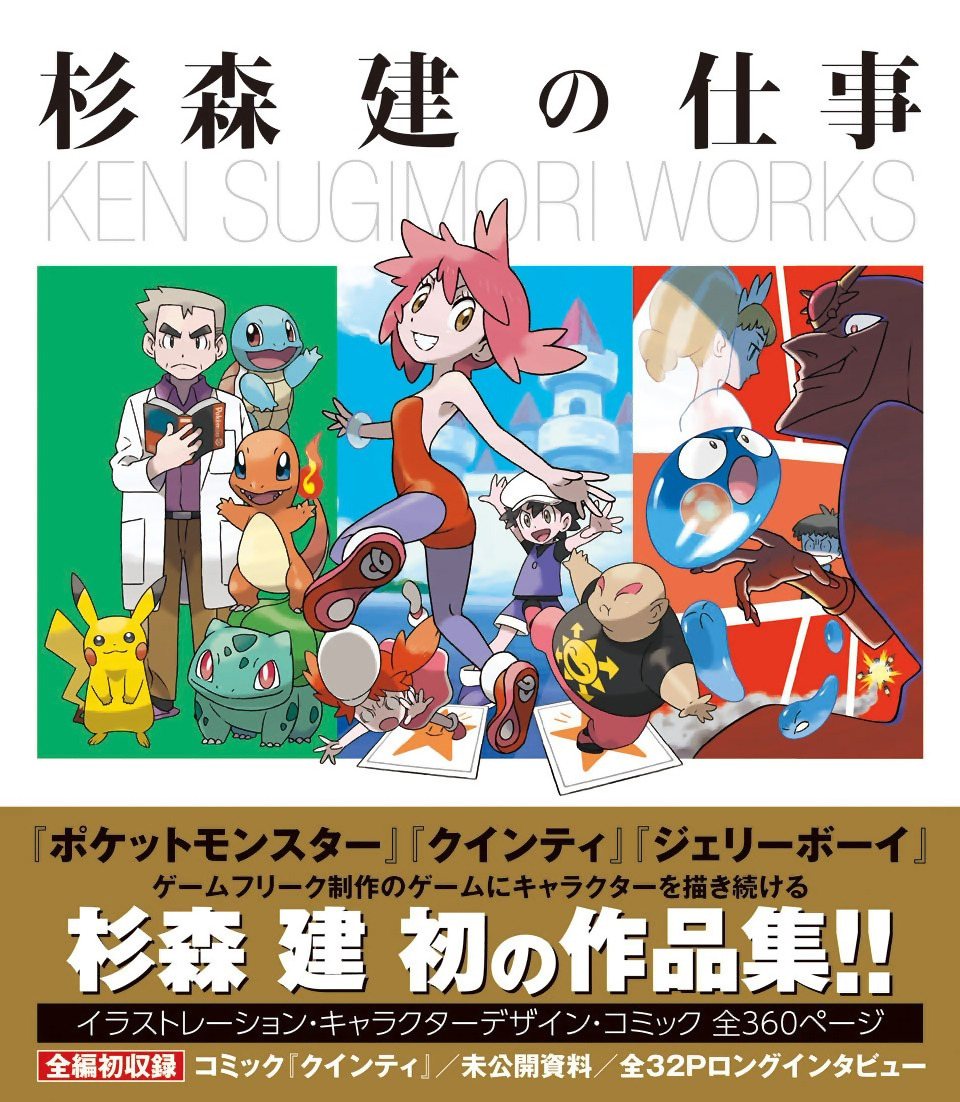|
|
Post by daimakaimura on Apr 3, 2014 14:21:39 GMT -5
at last in a long time i can add something :-)
that Magical Taluluto-kun game also had a snes version, though it wasnt as nice looking for as far as i could remember.
correct me if i was wrong but i used to play it.
|
|
|
|
Post by Discoalucard on Apr 3, 2014 14:25:16 GMT -5
There were several Magical Taluluto-kun games, but only the Mega Drive one was made by Game Freak. The SFC one was a totally different game called Magical Taluluto-kun Magic Adventure.
|
|
|
|
Post by kingmike on Apr 4, 2014 21:11:32 GMT -5
Bandai (or more likely a developer contracted by Bandai) made most/all Nintendo console MT games.
|
|
|
|
Post by Discoalucard on Apr 12, 2014 22:03:07 GMT -5
|
|
|
|
Post by Narushima on Apr 13, 2014 11:21:10 GMT -5
Mario & Wario: "wheeled mouse" > I don't see a wheel.
|
|
|
|
Post by Malev on Apr 13, 2014 12:30:12 GMT -5
Mario & Wario: "wheeled mouse" > I don't see a wheel. Oops, didn't mean scroll wheel, I meant the ball. |
|
|
|
Post by Malev on Apr 21, 2014 17:59:31 GMT -5
Ken Sugimori's released a book of his work on Mendel Palace, Smart Ball, and early Pokemon. It's on the Japanese Amazon store. I believe it has all the collected manga for Mendel & Smart Ball included.  |
|
|
|
Post by Jungyin on Apr 21, 2014 20:20:10 GMT -5
That's awesome, definitely going to get that. Hope he makes one with Pulseman and other Game Freak games someday.
|
|
|
|
Post by pikawil on May 5, 2014 1:25:50 GMT -5
A typo in the Pulseman page: It's "Rotom," not "Votom." Also worth noting is that not only is Volt Tackle based on Volteccer, in Japan it is named "Volteccer".
|
|
|
|
Post by pennywise on May 5, 2014 13:40:49 GMT -5
|
|
|
|
Post by tbb on May 16, 2014 20:11:10 GMT -5
"[Pulseman] only saw a brief stint on Sega's Sega Channel cable broadcast-download service in America in the mid-90s before finally receiving a release 15 years later in the West via the Wii's Virtual Console. None of the Japanese text was translated,"
None of the text was translated in just the VC version, or none of the text was translated in the Sega Channel version either?
|
|
|
|
Post by Malev on May 16, 2014 22:34:15 GMT -5
"[Pulseman] only saw a brief stint on Sega's Sega Channel cable broadcast-download service in America in the mid-90s before finally receiving a release 15 years later in the West via the Wii's Virtual Console. None of the Japanese text was translated," None of the text was translated in just the VC version, or none of the text was translated in the Sega Channel version either? I know for certain in wasn't translated on the Virtual Console. I can't vouch for Sega Channel since the service didn't run where I lived, but it's possible that it wasn't translated there either. With the English voice-overs, it isn't required aside from the skippable backstory anyway. |
|
|
|
Post by Jungyin on May 20, 2014 23:21:07 GMT -5
There's some preview pages of Ken Sugimori's book on Amazon now. Pulseman looked a lot more Sonic-like early on.
|
|
|
|
Post by Malev on May 21, 2014 6:42:59 GMT -5
There's some preview pages of Ken Sugimori's book on Amazon now. Pulseman looked a lot more Sonic-like early on. Nice to know it has more than just the 3 titles listed on the cover. A scan of this book would be a veritable gold mine for info. Hell, I'd enjoy translating all the manga and stuff inside. |
|
|
|
Post by Jungyin on Aug 25, 2014 23:36:11 GMT -5
I meant to post about the book after I got it, but kept putting it off until now. I like it a lot, probably even more if I knew Japanese.  It's split into 3 sections focusing on the games showcased on the cover. The Quinty and Jerry Boy sections have possibly complete collections of the manga made for the games as well as some development and advertising artwork. The Quinty manga in particular interesting because you can see the evolution of Sugimori's style, from the round and chubby look seen in Quinty to the taller, angular style seen in the early Pokémon games. The Pokémon section is much shorter than the other two, with some art of characters and Pokémon from the remake of Red/Green, a showcase of the main game's covers, and some promo art. At the beginning, end, and between sections there are interviews and art from other games and works, including some art showing Sugimori's style from before Quinty, and even a few sketches from Jerry Boy 2. All in all it was worth the money, in my opinion, and I'm tempted to buy another copy to send to someone to translate. |
|